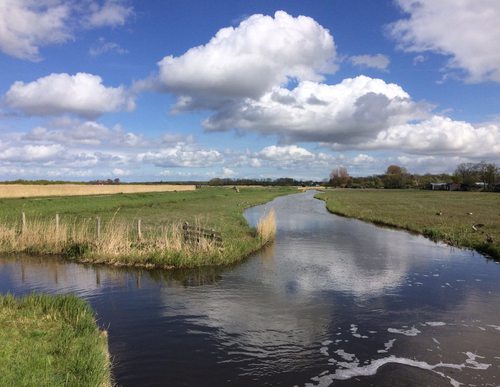Starting point Breezand

Routes from this starting point
-
Noordhollands Kanaalroute (groen)
Unpaved path (partly) No dogs allowed - 6.09km
-
Balgkanaalroute (rood)
Unpaved path (partly) No dogs allowed - 9.62km
The southern 'Balgzand' mudflat was not reclaimed until 1846, when it was named 'Anna Paulowna', after William II's wife: Anna, daughter of the Russian Tsar Paul I. The first residents of the polder were housed in tiny homes along the Molenvaart canal, in what later came to be called the Gelderse Buurt. They were unemployed people from the province of Gelderland, who had been persuaded by a vicar to reclaim the newly drained polder. However, the sandy Westpolder proved infertile and the yields were meagre. In Breezand, the first houses were built after 1860 on either side of the Zandvaart canal. Things didn’t turn around until 1910-1920, when bulb growers from 'De Zuid' near the town of Lisse settled here, looking for low-humus, chalky soil and cheap labour. After many setbacks, such as bulb diseases, the Great Depression and the war years, things really started to pay off in the 1950s. And after the 1970s, the polder was all about the flowers, except for some new housing estates.
- The Noordhollandsch Kanaal Route (green) runs via the Zand en Molenvaarten canals to Westeinde with its ferry (since 1849). You also walk on the grass dike (the east dike of the Koegras polder) with all its sheep and along the Noordhollandsch Kanaal (Great North Holland Canal).
- The Balgkanaal Route (red) goes past the bulb fields to De Kooij and over the grassy dike along the Balgkanaal, then over a small bridge and along the Zandvaart canal.

